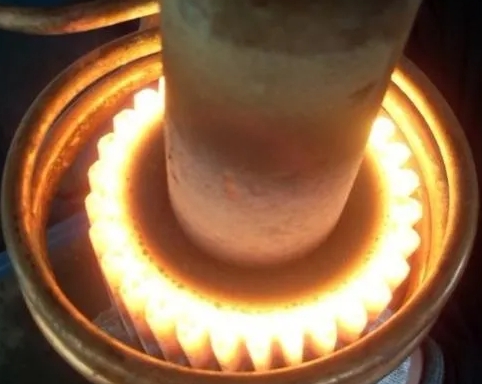- 10
- May
The key process control method of the quenching production process of high frequency quenching equipment
The key process control method of the quenching production process of high frequency quenching equipment
1. During the production process, the wire-passing wheel, guide wheel, traction plate and box in the pay-off and take-up area must ensure that the surface of the steel wire is not damaged.
2. The furnace tube must be replaced once every three months, and make a record. The ceramic particles in the vibration cleaning box must cover the steel wire tightly, if not, add it at any time.
3. When the steel wire is released from the furnace, it should be separated on the spool, and at the same time, the inner wall of the furnace tube should not be worn.
4. The charcoal and covering agent before the steel wire enters the lead liquid should be kept at a thickness of 10-15 cm. After each furnace line is produced, the charcoal should be replaced, and the lead slag should be cleaned at the same time. The charcoal on the surface should be kept moist. When the charcoal becomes gray-white, the charcoal should be replaced immediately to ensure that the charcoal is covered tightly to prevent the air from entering and causing the surface of the steel wire to be oxidized.
5. The cycle of the covering agent in the middle section of the lead pot is two months. When it is used for one month, 6 to 8 bags of intermediate materials need to be added; when it is the second month, all new intermediate materials (800 kg) need to be replaced. At the same time, clean up lead slag and lead oxide, and ensure that the lead liquid level is kept in a working state of 430-450mm (measure once a week and make a record. If it is lower than this range, lead ingots should be added in time).
6. During the use of lead soil, due to the shaking of the steel wire, there will be a phenomenon of “digging holes”, which must be taken with a shovel at any time. When the lead soil is not enough, replenish it in time.
7. During the heat treatment of the steel wire, the pay-off tension should be adjusted according to the diameter of the cold-drawn steel wire. After heat treatment, the wire diameter must be measured three times at the head, middle and tail of the steel wire. When baking Φ3.0, Φ3.45, Φ3.8 steel wire, the over-burned wire section of the head of each coil of tens of meters must be marked with yellow paint, and clearly marked on the production daily report and work card.
8. The spools before and after the lead pot and the spools must be checked once every three furnace lines after production. If the wear is serious, the axial direction should be adjusted or replaced.
9. During the production process, it is strictly forbidden for the steel wire to be twisted in the lead pot, which will lead to lead hanging. If there is any lead hanging, it must be handled in time.
10. The cooling water temperature of the lead pot should be controlled below 60°C for 1# furnace and below 60°C for 2# furnace.
Below 80°C, the spray holes should be unobstructed to ensure that the steel wire does not form excessive bubbles and vapors when it enters the acid solution.

